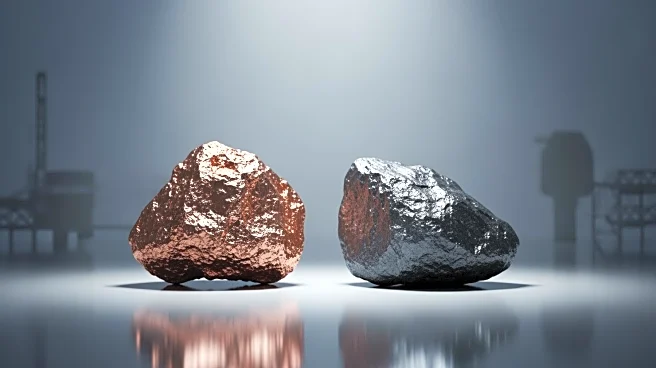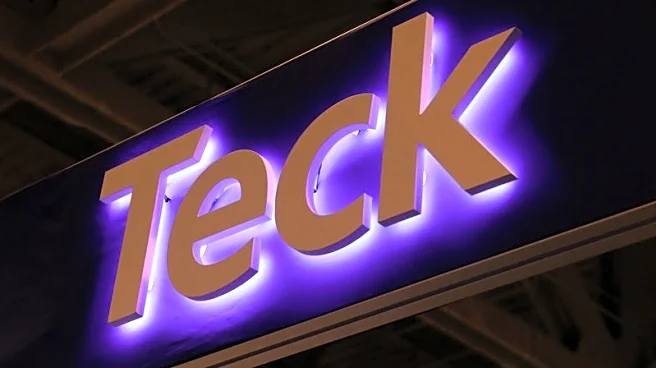What's Happening?
The global copper market is experiencing its first year of mine supply contraction since 2019, primarily due to aging mines and a lack of new discoveries. Major disruptions have occurred, such as the temporary suspension of operations at Freeport-McMoRan's
Grasberg Block Cave mine in Indonesia following a landslide. This incident has significantly impacted production, with Freeport anticipating a 4% decrease in consolidated copper sales for the third quarter of 2025. Additionally, Ivanhoe Mines' Kakula Mine faced seismic setbacks, leading to a suspension of underground mining activities. These disruptions, coupled with the underperformance of large mines like Chile's Collahuasi, have tightened the copper supply, driving up prices.
Why It's Important?
The contraction in copper supply has significant implications for industries reliant on this metal, particularly the green energy sector, which requires copper for electric vehicles and renewable energy infrastructure. The supply constraints are contributing to higher copper prices, which have risen by about 24% since April 2025. This price increase could impact the cost of green technologies and infrastructure projects. Furthermore, the lack of new mining capacity and reliance on aging mines pose long-term challenges for the industry, potentially leading to further supply shortages and price volatility.
What's Next?
Governments are stepping in to support the copper industry, with the Australian and Queensland governments providing a $600 million support package to Glencore to maintain operations at its Mount Isa copper operations. Companies like Revolver Resources and True North Copper are advancing projects to increase copper production, with Revolver targeting first copper output by Q4 2026. These efforts aim to stabilize supply and meet the growing demand from sectors like data centers, which have seen a rapid increase in copper demand due to advancements in artificial intelligence.
Beyond the Headlines
The current situation highlights the mining industry's reliance on a small number of aging mines, which could lead to increased environmental and operational risks. The focus on expanding existing operations rather than developing new mines may limit the industry's ability to meet future demand sustainably. Additionally, the rising copper prices could incentivize investment in exploration and development of new mining projects, potentially leading to a shift in the industry's approach to resource management.














